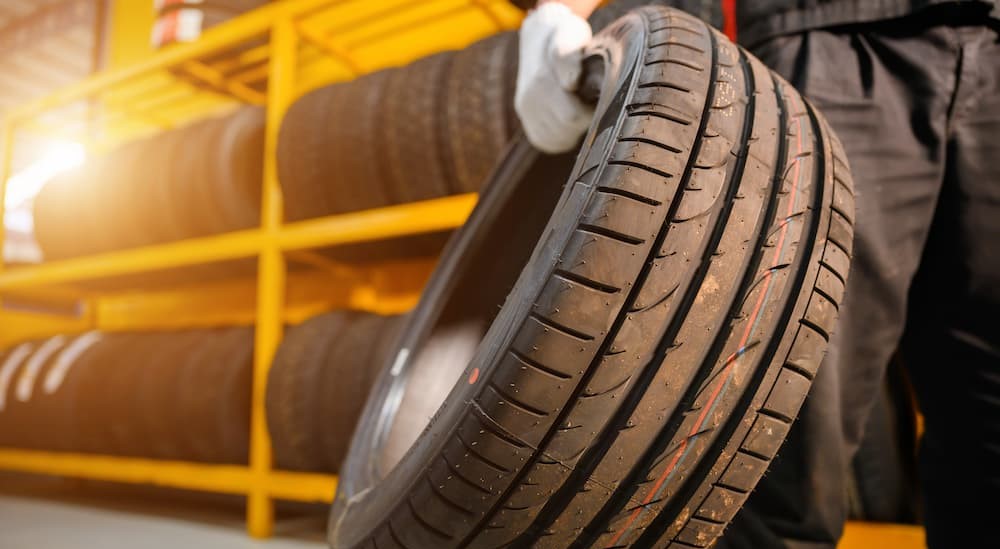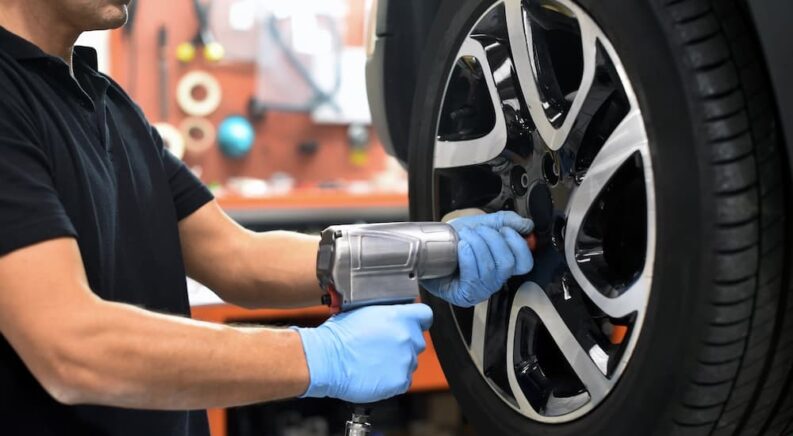Your wheels are some of the most important parts of your vehicle, but that doesn’t mean you can’t also use them to express yourself. The wheels put on your car by the factory work just fine, of course, but there are numerous reasons you might want to customize your wheels or swap them out for something else. That being said, you don’t have total freedom when it comes to the wheels you slap on your vehicle, and it’s vital that you keep certain things in mind as you’re looking at new options for your ride. You can always have your favorite tire shop handle things for you, too, or ask them to help you with measurements. Let’s take a look at what you need to know when considering swapping out the wheels on your vehicle.
Replacing Wheels vs Replacing Tires
One thing I should mention first is that there’s a difference between changing the wheels and changing the tires on your car. The wheel on your vehicle is the part that connects to your car and spins as you drive, while the tire is the rubber ring wrapped around it. That being said, no one replaces the tires on their vehicle without removing the wheel along with it. This means the best time to change your wheels is when you need to change your tires. But first, there are some key factors and important things you need to know when it comes to choosing new wheels for your ride.

Measurements You Need to Know
There are nearly limitless styles and designs for wheels these days; whether you want something that looks flashy or aggressive—or like a teddy bear—you’re covered. It’s fun to look at different wheel designs, but there are some important things you need to know first. At the top of the list, you need to know what size wheels you can fit onto your vehicle. If you go too big, then your wheels or tires can damage other parts of your vehicle or reduce your car’s performance. Going too small can result in the underside of your car hitting things more easily and affect your handling on the road. Here are key measurements you need to know:
Wheel Diameter
Also known as the rim size, the wheel diameter is the distance from one edge of the wheel to the opposite side—it’s what you see when you’re looking at the wheel from the side of your car. This is the number you probably already know because it’s how wheels are described in general. If you’re looking at a new truck and the manufacturer says it has 18- or 20-inch wheels, that refers to the wheel diameter. Your owner’s manual should indicate what wheel sizes your vehicle is available with from the factory. There are ways to change the wheel diameter your vehicle can safely fit, such as a suspension lift kit, so keep that in mind when considering your options.
Wheel Width
If you were to take a wheel off your vehicle and look at it head-on, then that would show you the wheel width and make it easy to measure. This directly affects how wide of a tire you can have on your car, truck, or SUV since it needs to wrap around your wheel securely. Wide wheels and tires have become quite popular since they allow for excellent traction, making them great for both going off-road and boosting track performance.
Wheel Offset
This is a bit more technical than wheel diameter and width but crucial when looking at different options for changing out your wheels. Offset refers to the distance between the surface of the hub (where your wheel attaches to your vehicle) and the centerline of the wheel. You’ll see it indicated in one of three ways: zero, positive, or negative offset. Zero means it’s flush, while negative offset means the mounting surface is set back toward your vehicle, and positive offset means the hub mounting surface protrudes toward the outer lip of the wheel or away from your vehicle.
This is important as you look at different wheels because a positive offset brings the rim of your wheel deeper into the wheel well of your vehicle, which can be perfect if you are trying to fit wider wheels inside the wheel wells of your car. Negative offset, on the other hand, pushes your wheels outward, which can be helpful if you want wide tires and need to allow for clearance from your vehicle’s other components. This is a tricky thing to balance, and it’s a great idea to talk to someone at your favorite tire shop to find out what kind of offset will work best for what you have in mind.
Backspacing and Center Bore
These are two final measurements you should have in mind: backspacing refers to the distance between the back of your wheel’s mounting surface and its inner wheel lip, while center bore measures the hole in the middle of its rim. You need to keep backspacing in mind because if you get a wheel with backspacing that’s too large, it won’t clear the inside of your vehicle’s wheel well. The center bore is essential to ensure your new wheel will fit over the flange in the center of the wheel hub on your vehicle as you install it—you want a snug fit that’s neither too large nor small. If your wheel has a larger center bore than your vehicle needs, you can get wheel centering spacers to make it fit perfectly, but if it’s too small, then the wheel won’t fit.

Other Considerations for Sizing
While those are the major measurements you need to know as you look at new wheels for your vehicle, they’re not the only things you should have in mind. There are two other important factors that you need to figure out to ensure you get new wheels that fit safely and securely on your vehicle. This might all seem a bit overwhelming at first, but just take things one step at a time, and it’s not too bad.
Bolt Pattern
This is one of the simplest things to figure out. You need to look at the number of lug holes on your wheels and how they’re spaced. Your vehicle has wheel studs or bolts on the hub, and you need to be able to fit your new wheels onto those. You’ll see the number of lug holes indicated simply: a five-lug wheel is for a vehicle with five wheel studs, etc. The distance between those studs is also important since the holes in your new wheels need to line up properly—annoyingly, you’ll find this indicated in either millimeters or inches. For example, you might see a 4×100 bolt pattern, meaning four studs with 100 mm between them, or 5×4 for a pattern with five studs and four inches between them. The number of holes is always first, and the distance is second.
Wheel Design: Hub Centric or Lug Centric
There are two basic designs for how wheels center on the hub of your car. Hub-centric wheels secure tightly to the center flange on your wheel hub, and rely on this for perfect positioning and balance. Lug-centric wheels, on the other hand, use the wheel studs and nuts to ensure they’re properly centered on their hubs. You’ll want to look at this for new wheels you’re interested in and make sure you know how to install them correctly to ensure proper centering and balance.
Now You’re Ready to Replace Your Wheels
The fun part of looking at new wheels for your vehicle is exploring different designs, shapes, and patterns to get something that lets you express yourself and looks great. It’s just as important to know what you can reasonably fit onto your vehicle so you don’t find something that looks perfect but that can’t actually be installed onto your car. Figuring out the measurements you need and the bolt pattern you’re looking for can make it a lot easier to narrow down your options while shopping for new wheels and ensure what you find will work for you. Replacing your wheels is pretty easy, but if you need help figuring out measurements or tricky details like wheel offset, then don’t be afraid to ask a professional at a tire shop and make sure you know what you’re getting into.

